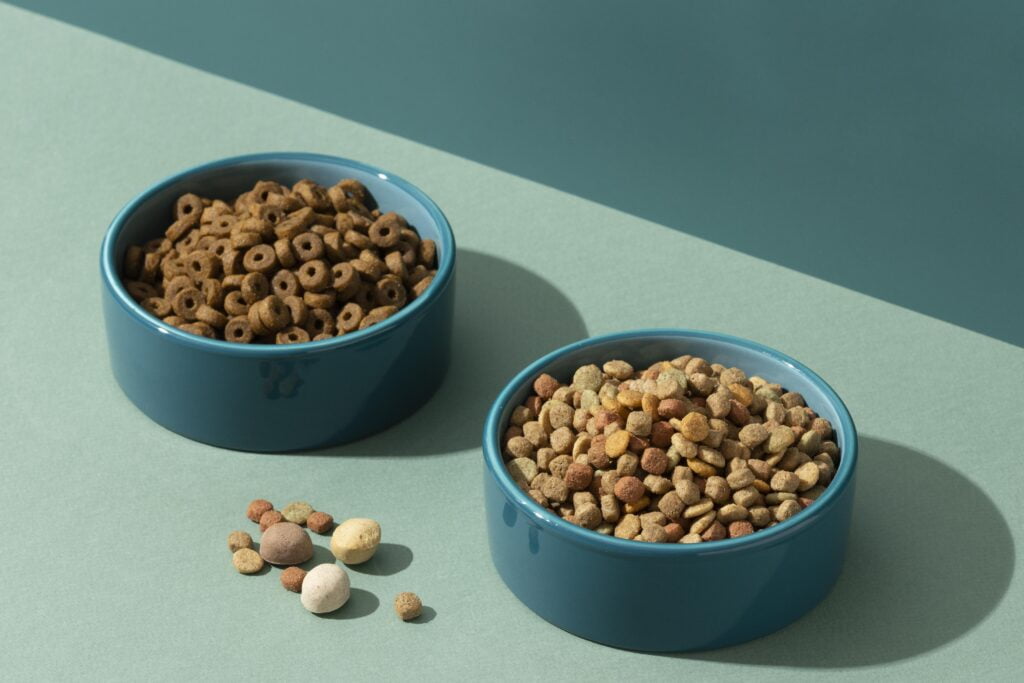Choosing The Right Pet Food: A Nourishing Journey for Our Furry Friends
Have you ever wondered what goes into making your pet’s food as delicious and nutritious as
it is? Just like we enjoy a variety of foods, our furry friends have unique tastes and dietary
needs. Join us on a journey to discover the secrets of choosing the right pet food, ensuring
our beloved companions stay happy and healthy!
Understanding Our Furry Friends’ Needs
Before we dive into the world of pet food, let’s take a moment to understand the nutritional
needs of our four-legged companions. Dogs and cats, like humans, must a balanced diet
that includes proteins, carbohydrates, fats, vitamins, and minerals.
The key is finding the right
combination that suits their age, size, breed, and health condition.
Our pets depend on us to make informed choices when it comes to their meals. Just like we
want the best for ourselves, our furry friends deserve the same level of care and
consideration when it comes to their diet.
1. Decoding Pet Food Labels: The Scoop on Ingredients
Ever wondered what those labels on pet food bags mean? Let’s decode them together! Look
for real, recognizable ingredients like chicken, beef, or fish. Avoid foods with mysterious
names or unclear sources. The first few ingredients listed on the label are the primary
components of the food.
Imagine picking out ingredients for your friend’s favorite meal – you’d choose the best, right?
It’s the same for our pets. The more natural and familiar the ingredients, the better it is for
their health and happiness.
2. Tailoring to Your Pet’s Age and Size
Just like our diet changes as we grow, our pets’ nutritional needs evolve too. Puppies and
kittens need food that supports their rapid growth, while senior pets may benefit from meals
that cater to their aging bodies. Small and large breeds also have different requirements, so
choose food that’s tailored to your pet’s specific stage in life and size.
Imagine if we kept eating the same food from when we were babies – it wouldn’t suit our
needs now, would it? The same logic applies to our furry friends.
3. Special Diets for Health Conditions
Sometimes our pets face health challenges, and their diet plays a crucial role in their wellbeing. If your pet has allergies, sensitive stomachs, or specific health conditions, there are
specialized diets available. Consult your veterinarian to find the best food that addresses
your pet’s unique needs.
Think of it like having a friend with certain dietary restrictions – you’d make sure to choose
foods that suit their health, right? Our pets deserve the same consideration.
4. Wet vs. Dry Food: The Great Debate
Ah, the eternal debate – wet or dry food? The truth is, both have their pros and cons. Wet
food is great for hydration and can be easier for some pets to eat, especially those with
dental issues. Dry kibble, on the other hand, can help keep teeth clean and is convenient for
storage.
Imagine if we had the same meal every day – it might get boring, right? Offering a mix of wet
and dry food can add variety to our pets’ meals and keep them excited about mealtime.
5. Treats: A Little Something Extra
Treats are like little surprises for our furry pals, but moderation is key. Choose treats made
with wholesome ingredients and avoid excessive sugars or artificial additives. Use treats as
rewards during training or as a special bonding moment.
Think of treats as the dessert after a tasty meal – enjoyable in moderation and a great way to
show some extra love to our pets.
6. Reading Reviews and Seeking Recommendations
Just like we read reviews before trying a new restaurant, it’s a good idea to check what other
pet parents say about a particular brand of pet food. You can also seek recommendations
from your veterinarian or fellow pet owners. Their experiences can provide valuable insights
into the quality and effectiveness of different pet foods.
Imagine getting a recommendation for a fantastic book or movie from a friend – it’s like a
trusted guide leading you to something wonderful. The same principle applies to choosing
the right pet food.
7. Budgeting for Quality Nutrition
We all have budgets to consider, but when it comes to our pets’ health, investing in quality
nutrition is crucial. While there are various price ranges for pet food, rank options that
offer balanced nutrition and meet your pet’s specific needs. Consider it an investment in
their well-being.
Think of it like choosing between a low-quality and a high-quality backpack for school –
investing a bit more in the right one ensures it lasts longer and serves its purpose well. The
same goes for choosing pet food.
8. Transitioning Gradually: A Gentle Approach
When introducing a new type of pet food, it’s essential to transition gradually. Mix the new
food with the old one over several days to avoid stomach upset. This slow transition helps
your pet adjust to the new flavors and textures without causing digestive issues.
Imagine suddenly changing your favorite meal – your stomach might need time to adjust. Our
pets feel the same way about changes in their diet, so a gradual transition is a thoughtful
approach.
Conclusion: A Feast of Love and Care
In the grand banquet of life, our pets are our cherished companions, and the food we provide
them is a feast of love and care. By understanding their nutritional needs, decoding labels,
and making informed choices, we ensure their bowls are filled with the best.
So, let’s continue
this nourishing journey, always keeping in mind that our pets deserve the very best, just like
we do. Happy eating, furry friends!
Related Keywords:
Pet nutrition
Animal feed
Pet diet
Premium pet food




